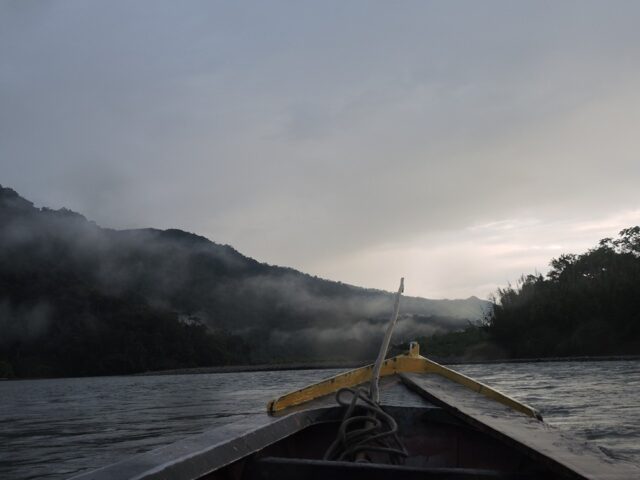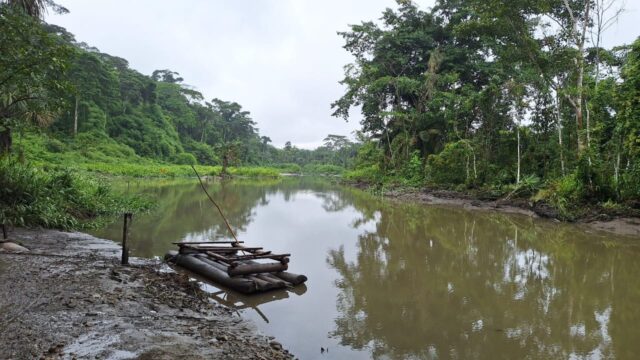Nestled in the heart of the Peruvian Amazon, Manu National Park is a sprawling expanse of rich biodiversity and breathtaking landscapes. This UNESCO World Heritage Site is a natural marvel, offering an unparalleled glimpse into the diverse ecosystems of the Amazon basin. As a haven for wildlife enthusiasts, adventure seekers, and nature lovers alike, Manu promises an experience like no other. Understanding the park’s seasonal variations is crucial for making the most of your visit. In this article, we’ll explore the wonders of Manu, delve into its diverse seasonal landscapes, identify optimal times for wildlife viewing, and offer tips on planning your adventure based on seasonal highlights.
Discover the Wonders of Manu National Park
Manu National Park is a treasure trove of natural wonders, stretching over 1.5 million hectares across the Andean highlands, cloud forests, and lowland rainforests. This immense biodiversity is home to an astonishing array of flora and fauna, including more than 1,000 bird species, 200 mammal species, and countless reptiles, amphibians, and insects. The park’s pristine ecosystems offer a glimpse into the world’s most diverse habitats, each teeming with life and color.
One of the park’s most captivating features is its rich cultural heritage. Manu is home to indigenous communities that have lived in harmony with the land for centuries. These communities offer visitors a unique opportunity to learn about traditional ways of life and the deep connection between the people and the environment. Guided tours led by indigenous guides provide insights into the cultural significance of the park and the sustainable practices that have preserved its natural beauty for generations.
The park’s diverse terrain offers something for every type of adventurer. From the towering peaks of the Andes to the lush, dense rainforests of the Amazon basin, Manu’s landscapes are as varied as they are stunning. Whether you’re trekking through cloud forests, navigating winding rivers, or observing wildlife from a canopy tower, the park’s natural beauty is sure to leave a lasting impression.
Manu National Park is not just a destination; it’s an immersive experience that connects visitors to the raw, untamed beauty of the natural world. As you explore its wonders, you’ll gain a deeper appreciation for the intricate web of life that thrives within its borders and the importance of preserving such pristine environments for future generations.
Unveiling Manu’s Diverse Seasonal Landscapes
Manu’s landscapes transform dramatically with the changing seasons, each offering a unique perspective on the park’s natural beauty. The dry season, which runs from May to September, is characterized by clear skies and cooler temperatures. This is the ideal time for trekking and exploring the park’s higher altitudes, where the absence of rain makes trails more accessible and wildlife easier to spot.
In contrast, the wet season, from November to April, brings the rainforest to life with vibrant greens and an abundance of blooming flora. The increased rainfall fills the rivers and streams, creating a lush, verdant environment that is a sight to behold. Although some areas may become more challenging to navigate due to flooding, the wet season offers a unique opportunity to witness the rainforest in its most dynamic state.

The transitional months of April and October are particularly intriguing, as they offer a blend of both dry and wet season characteristics. During these times, visitors can experience the park’s full range of ecosystems in one trip, from misty cloud forests to sun-drenched lowlands. These months also tend to be less crowded, providing a more intimate and serene experience for those seeking solitude in nature.
Regardless of the season, Manu’s landscapes promise awe-inspiring vistas and unparalleled opportunities for exploration. Each season brings its own set of challenges and rewards, making every visit a unique adventure. Whether you’re drawn to the dry season’s accessibility or the wet season’s lushness, Manu’s ever-changing landscapes offer endless possibilities for discovery.
Optimal Times to Experience Manu’s Wildlife
Manu National Park is renowned for its incredible biodiversity, making it a prime destination for wildlife enthusiasts. The dry season is often considered the best time for wildlife viewing, as animals tend to congregate around water sources, making them easier to spot. The clearer skies and open trails also enhance visibility, allowing visitors to observe a wide range of species in their natural habitats.
Birdwatchers, in particular, will find the dry season to be a paradise. With over 1,000 bird species recorded in the park, including the resplendent quetzal and the vibrant macaws, Manu offers a birdwatching experience like no other. The dry season’s favorable conditions make it easier to explore the park’s diverse habitats and catch sight of these avian wonders.
However, the wet season should not be overlooked by wildlife enthusiasts. The increased rainfall brings a surge of life to the rainforest, attracting a variety of species that thrive in the lush, humid environment. Amphibians and insects become more active, and the forest resonates with the sounds of chirping frogs and buzzing insects. This season also offers the chance to witness the spectacular courtship displays of certain bird species, adding an extra layer of excitement to wildlife observations.
Ultimately, the best time to experience Manu’s wildlife depends on your interests and what you hope to see. Whether you’re drawn to the abundance of the dry season or the vibrancy of the wet season, the park’s diverse ecosystems ensure that every visit is filled with unique wildlife encounters.
Planning Your Visit: Seasonal Highlights in Manu
When planning your visit to Manu National Park, it’s essential to consider the seasonal highlights that align with your interests. The dry season, with its clear skies and cooler temperatures, is perfect for outdoor activities such as hiking, birdwatching, and exploring the park’s archaeological sites. The reduced rainfall also means fewer mosquitoes, making it a more comfortable time for camping and other outdoor adventures.
For those interested in experiencing the rainforest in full bloom, the wet season offers a different kind of magic. The lush, green landscapes and abundant wildlife create a vibrant, immersive experience. While some trails may be more challenging to navigate, the rewards of witnessing the rainforest’s dynamic beauty are well worth the effort. Boat tours along the swollen rivers provide a unique perspective on the park’s ecosystems and are a highlight of the wet season.

Regardless of the season, it’s crucial to come prepared for the park’s remote and rugged conditions. Proper gear, including waterproof clothing and sturdy footwear, is essential for navigating Manu’s diverse terrain. Additionally, booking guided tours through reputable operators ensures a safe and enriching experience, as local guides possess invaluable knowledge about the park’s ecosystems and wildlife.
By understanding the seasonal highlights and planning your visit accordingly, you’ll be well-equipped to make the most of your Manu adventure. Whether you’re drawn to the dry season’s accessibility or the wet season’s vibrancy, the park’s ever-changing landscapes and abundant wildlife promise an unforgettable journey into the heart of the Amazon.
Manu National Park is a living testament to the wonders of nature, offering a diverse array of experiences that cater to every type of traveler. From its breathtaking landscapes to its rich biodiversity and cultural heritage, Manu is a destination that captivates the senses and inspires a deeper appreciation for the natural world. By understanding the park’s seasonal variations and planning your visit accordingly, you can ensure a truly memorable adventure. Whether you seek the thrill of wildlife encounters, the serenity of pristine landscapes, or the wisdom of indigenous cultures, Manu National Park is a place where the wonders of the natural world come alive.
